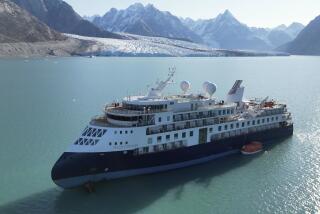Life Rafts Sank Along With Norway Ferry
- Share via
OSLO — The high-speed Norwegian ferry Sleipner may have sunk to the bottom of the North Sea with some of its life rafts in place, leading to fears Wednesday of a possible defect in an automatic release system used by a sister ship.
The sister ship, the Draupner, was ordered held at port for tests of its life-raft system, said Magne Roedland, a Bergen district official of Norway’s Maritime Directorate.
The 138-foot catamaran Sleipner ran aground Friday night and sank near Norway’s west coast.
All 86 people aboard ended up in the icy waters and rough seas, leading to a dramatic nighttime rescue effort. Seventy people were saved. Thirteen bodies were recovered, and three people are missing and believed dead.
The vessel’s four life rafts, with room for 140 people each, should have deployed and inflated automatically when the ship sank, even if the crew had been unable to launch them manually or with a remote control switch from the command bridge.
A Norwegian newspaper said that the Sleipner crew tried to launch the rafts in vain. It said video pictures of the wreck on the sea floor showed that three of the life rafts were still packed in the hull.
Ivar A. Manum, director of the Maritime Directorate, said the Sleipner should not have been sailing in waters where waves exceeded 3 feet because the rescue equipment and escape routes had not been tested in rough weather.
At the time of the accident, waves were estimated at between 6 and 10 feet high.
More to Read
Sign up for Essential California
The most important California stories and recommendations in your inbox every morning.
You may occasionally receive promotional content from the Los Angeles Times.











